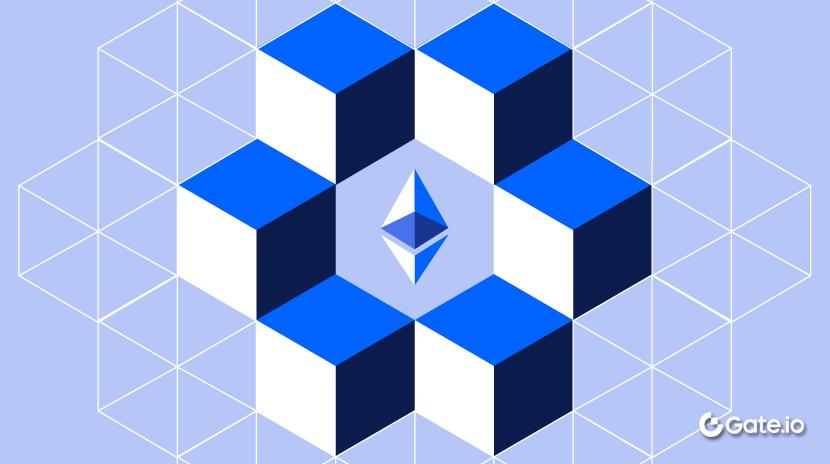迷因幣狂潮再起!如何用 Meme 的流量變現掌握下一個財富密碼?
本文深入探討迷因幣的起源、發展與投資風險。迷因幣源自網絡迷因文化,通過社群傳播和名人效應實現流量變現。從狗狗幣到柴犬幣再到Pepe幣,迷因幣市場波動劇烈,既創造了驚人財富效應,也埋下了投機風險。文章詳細分析了迷因幣的生命週期、投資策略和風險管理。隨著市場演進,投資者需在狂熱與理性間取得平衡,謹慎對待這股加密界的迷因浪潮。迷因幣源自於網路迷因(meme)的流行文化,代表將網路上的流量和社群熱潮轉化為真金白銀的投資標的。 第一個知名迷因幣「狗狗幣」(Dogecoin)於 2013 年由兩位工程師出於開玩笑的心態創立,意外開啟了日後的迷因幣熱潮。憑藉社交媒體病毒式傳播和名人助勢,原本只是網路笑話的狗狗幣價格一飛沖天,市值曾在 2021 年飆升至約 800 億美元的頂峰。隨著狗狗幣以及後來柴犬幣等暴漲神話不斷上演,這類迷因加密貨幣開始被部分投資人視為可以短線獲利的熱門資產類別。

迷因幣價格會在短時間內劇烈波動(來源:Gate.io)
迷因幣是什麼?
「迷因幣」指的是以網路迷因或搞笑話題為靈感創建的加密貨幣。迷因原本泛指能在短時間引起廣大共鳴、迅速爆紅傳播的文化元素,例如流行的圖片、影片、口號等;將這種元素結合區塊鏈代幣便產生了迷因幣。
與比特幣等主流加密貨幣旨在解決特定技術或金融問題不同,迷因幣通常沒有實際應用場景或創新技術支撐,其價值更多依賴於社群共識和話題熱度。由於缺乏內在價值背書,迷因幣的價格波動往往比一般加密貨幣更劇烈,極易受到社群媒體上的名人言論或市場情緒影響而大起大落。
另外,許多迷因幣為了博取關注採用誇張的發行量,導致單枚代幣價格極低(甚至幾美元就能買到上百萬枚),這種設計一方面降低了入門門檻,另一方面也放大了投機者對於價格上漲後賺大錢的想像空間。
迷因幣的市場趨勢與影響
過去幾年,迷因幣市場經歷了幾波引人注目的狂熱行情。其中最著名的是 2021 年狗狗幣(DOGE)開始暴漲並帶動風潮,市場上大量以狗為主題的迷因幣如雨後春筍湧現。當年狗狗幣價格一度上漲接近百倍,而號稱「狗狗幣殺手」的柴犬幣(SHIB),依據CoinGecko的數據,2020年發行時價格最低不到1×10−10美元,2021年最高點超過8×10−5美元,漲幅更高達數十萬倍,創下驚人的紀錄。
社群推廣、名人背書以及炒作口號(如「百倍幣」「千倍幣」)助長了投資者的FOMO心理,讓不少人瘋狂追高進場。然而隨著熱度消退,這波狗狗幣熱潮中絕大多數新創的迷因幣最終價格歸零、項目消聲匿跡,能在市場存活下來的僅有狗狗幣和柴犬幣等少數幾個龍頭。
在狗狗幣與柴犬幣之外,迷因幣熱潮並未止步。不久前的 2023 年4月,一款以知名網路青蛙迷因為主題的 Pepe 幣 ($PEPE) 爆紅,在上線後短短几周內價格瘋漲,低迷一陣後又持續暴漲,於2024年底市值突破100億美元大關。

Pepe 幣市值波動趨勢(來源:Gate.io)
這類迷因幣短期內聚集人氣、推高估值的現象,再次顯示出「流量變現」的強大威力。然而就如過往多數迷因幣的發展:Pepe 幣在熱潮過後幣價迅速滑落,此後持續崩跌並爆出團隊將資金大量轉移導致市場質疑其跑路風險的負面消息,甚至在2025年3月初其官方 X 帳號還出現疑似被駭客攻擊的警告。類似的暴起暴落週期,反映出迷因幣市場投機氣氛濃厚,對整體投資市場產生了高波性質的影響。

Pepe 官方 X 帳號疑似被駭客攻擊(來源:Pepe 官方 X 帳號)
迷因幣熱潮一方面將許多年輕散戶帶入加密市場,提升了市場交易量和話題關注度;依據CoinGecko的數據,每日有數十億美元資金在各種迷因幣間進行買賣。截至目前,[2]狗狗幣甚至仍然是全球市值排名第9的加密貨幣,並且用戶數僅次於比特幣,成為傳統媒體報導的焦點。
另一方面,這種過度投機也引發監管單位的擔憂:一些國家開始針對迷因幣祭出限制措施。例如,[2]泰國證券交易委員會在2021年初明令禁止交易迷因幣。
總結來說,迷因幣的興起對投資市場帶來了兩極化的影響——既創造了驚人的財富效應和話題流量,同時也埋下了高風險波動和潛在詐騙的隱憂。
Meme流量變現核心邏輯
迷因幣作為一種以幽默和病毒式傳播為核心的資產類型,往往誕生於社交媒體上的熱門話題,其價值並非來自技術創新,而在於背後海量用戶的共鳴與炒作,受到市場情緒與網絡熱度的巨大影響。
迷因幣的生命週期
迷因幣市場往往呈現明顯的週期性波動,這種波動由於消息面、社群情緒以及網絡熱度等因素推動,能夠劃分為以下幾個主要階段:
1.熱度引爆期
在這個階段,網路上流行的搞笑短片、熱門梗或名人推文迅速引發關注,大量資金紛紛進入市場,帶動迷因幣價格上漲。這時候雖然吸引力十足,但由於市場過熱,買入後價差空間有限,風險較高,往往不適合追高入場。
2.資金進場期
當市場情緒達到高峰時,社群紛紛討論、炒作,價格持續走高。不過,這一階段通常已出現一定的頂部風險,後續可能面臨調整。此時如果能識破「泡沫」跡象,及早賣出獲利再等待下一輪低點入場,將更有助於捕捉價差。
3.市場回調期
當市場熱度退去或出現負面消息時,價格會迅速回落,此時部分迷因幣會出現大幅下跌。對於有長期眼光的投資者來說,這正是一個買入優質迷因幣的時機。重點在於挑選那些底層技術穩固、社群支持度高或具備一定轉型潛力的幣種,而非僅憑炒作噱頭的短命幣種。
4.潛在續命或新起點期
回調到一定程度後,部分項目若能透過策略調整、品牌轉型或成功推出新功能,再次引起市場關注,便有可能形成新一輪上漲。這時候買入的迷因幣如果能順勢反彈,將帶來可觀的價差收益;但也有可能因市場失去信心而直接歸零,因此需謹慎判斷。
Slerf 幣就是很好的例子,該項目在預售後因操作失誤而意外銷燬了大量預留代幣,但這一失誤反而引發社群熱議推高了幣價,然後又快速回落。接著因為項目方發起募款希望補償投資人,吸引KOL支持使幣價再次回升。顯示迷因幣價格隨時會因為市場熱度改變而產生波動。
如何根據週期選幣並賺取價差
觀察迷因幣的市場週期狀態,是判斷買入時機好策略,最關鍵的操作在於等待市場回調,選擇那些基礎較好、社群支持堅固的迷因幣佈局,再利用價格回彈抓住賺取價差的機會。當然,這個過程伴隨著極高的波動性和各種風險,投資者必須設定好嚴謹的風控策略。具體可參考以下步驟:
1.數據觀察與市場情緒分析:
利用鏈上數據分析工具(例如AVE.ai)觀察大戶資金流向與持倉變化,瞭解哪些幣種在回調時資金流入較多。
關注社交媒體(如Twitter、TikTok)的討論熱度,判斷市場是否已由高峰進入調整期。
定期檢查交易量及流動性數據,確保所選幣種具有足夠的交易深度,以免流動性不足影響買賣操作。
2.選擇買入時機:
在市場回調期,當大部分幣種價格跌至相對低點,且有明顯價差回彈跡象時,應尋找那些基本面(如強大社群、品牌知名度、未來發展計劃)較為突出的迷因幣。
可設置自動止盈止損單,避免因市場波動過快而錯失入場時機或過度虧損。
3.實施分階段買入策略:
將資金分批入場,既能平滑價格波動風險,也能在不同價格區間捕捉價差。
例如,當市場明顯回調到一定區間時,先買入一部分,再根據後續走勢逐步增加倉位,最終在價格回彈初期全面佈局。
4.持續調整與靈活操作:
定期回顧投資組合,根據市場新動態進行再平衡,當部分幣種出現續命信號時,可以逐步加倉;若發現項目前景黯淡則及時減倉。
注意市場情緒的微妙變化,及時調整操作策略,做到快速出入場,捕捉短期價差。
Meme幣的未來:泡沫還是機會?
對於迷因幣的長期前景,一般認為迷因幣純粹屬於泡沫投機,缺乏基本面支撐,終將如同鬱金香熱潮般破滅。回顧歷史,每一波迷因幣熱潮絕大多數項目最終都逃不過價格歸零的命運。即便如狗狗幣、柴犬幣這樣存活下來的領頭羊,其幣價也遠低於高峰時的估值,足見迷因幣的熱度往往難以長久維繫。由於長期投資展望不佳,且高度依賴市場情緒,迷因幣難以成為穩健的資產配置標的。
然而,由於迷因幣大漲大跌的特性,只要掌握時機挑對項目,依然有可觀的短期收益潛力。並且,擁有龐大且忠誠社群的迷因幣可能在未來尋求轉型,賦予代幣更多實用性。以下是幾個具體的轉型路徑與應用場景:
DeFi 生態與去中心化交易所應用
例如柴犬幣團隊近期積極開發自己的去中心化交易所 ShibaSwap,希望為代幣引入實際應用價值,以維繫長期發展。不僅提供了流動性挖礦、質押獎勵與交易撮合服務,還設計了專屬的發射臺(Launchpad),幫助新興項目在早期獲取資金。這種模式不僅提升了幣種的使用場景,更為持幣者創造了長期持有的動力,進一步改變了市場僅以投機為主的局面。
元宇宙遊戲的融合應用
除了DeFi 生態,柴犬幣團隊甚至設計互動遊戲和元宇宙場景,讓投資者能透過參與遊戲獲取額外收益。這種融合不僅能鞏固現有社群,還能吸引更廣泛的投資者群體。

柴犬幣團隊開發的元宇宙遊戲(來源:Shib the METAVERSE)
與支付平臺整合
隨著區塊鏈技術的不斷成熟,迷因幣開始與主流支付平臺、線上購物平臺或社交平臺合作,將其作為一種低門檻的打賞、購物或跨境支付工具。例如狗狗幣因獲得馬斯克等名人長期支持,目前也和Tesla合作,可以用來在 Tesla 網上商店使用狗狗幣進行交易,只要產品的「訂購」按鈕旁有狗狗幣符號,即表示該產品可以以狗狗幣購買。
大多數投機泡沫終將破滅,但極少數具備強大社群基礎或成功轉型的項目或許能在潮水退去後繼續生存,甚至在往後的市場循環中再創新高。對投資人而言,如何分辨泡沫與機會、抓住紅利同時避開地雷,將是持續的考驗。
迷因幣怎麼買?
購買迷因幣的方式其實與其他加密貨幣相似。新手投資者可以參考以下方法:
使用中心化交易所
對於市值較大的主流迷因幣(如 DOGE、SHIB),幾乎所有大型加密貨幣交易所(例如:Gate.io)都提供其交易對。
首先要先註冊帳戶並完成必要的身分驗證(KYC),在交易所帳戶中存入主流穩定幣(如 USDT),作為購買迷因幣的資金。
於交易所中搜尋目標迷因幣的代幣代號(例如 DOGE、SHIB),根據即時價格下單買入所需數量的代幣。成交後,可在帳戶錢包中查看持有的迷因幣餘額。

主流迷因幣大多可在中心化交易所直接交易(來源:Gate.io)
使用去中心化交易所
若想購買尚未在中心化交易所上架的迷因幣,則需要透過去中心化交易所(DEX)進行交換。去中心化交易所是一種沒有中央機構控制的加密貨幣交易平臺。與傳統交易所不同,DEX 的交易是直接透過區塊鏈上的智能合約進行,使用者不需要將資金存入交易所,而是透過個人加密錢包直接進行交易。
例如使用 Uniswap、PancakeSwap 等平臺,需先準備好對應區塊鏈網路的加密錢包(如 MetaMask)以及該網路上的主流幣種作為交換媒介(例如以太幣換購基於以太坊的迷因幣)。
在 DEX 上透過智能合約將代幣交換成目標迷因幣時,務必確認輸入正確的合約地址,以避免買到仿冒代幣。

從去中心化交易所購買迷因幣(來源:Uniswap)
存儲與安全
購買完成後,可以選擇將代幣留存在交易所錢包,或提領至個人的加密錢包(如硬體錢包或手機App錢包)中自行保管。若選擇自行保管,一定要妥善保存錢包的私鑰和助記詞,確保資產安全無虞。同時建議定期檢視帳戶安全設定,在交易所開啟雙重驗證等措施,以降低風險。
迷因幣有哪些?
目前市面上迷因幣種類繁多,但真正脫穎而出的項目屈指可數。以下介紹幾個除了上述提到的DOGE、SHIB、PEPE之外,比較知名的迷因幣:
Floki 幣
以馬斯克愛犬之名命名的 Floki 幣是在狗狗幣熱潮後出現的另一種狗狗題材迷因幣。 [1]該幣曾透過在倫敦地鐵投放廣告等激進行銷手法引發關注,甚至一度招來英國監管機構調查其廣告合規問題。儘管如此,Floki 幣靠著社群力量也躋身市值前列,在迷因幣板塊中佔有一席之地。

Floki 幣是另一種狗狗題材迷因幣(來源:Floki 官網)
Nyan Cat 幣
Nyan Cat 幣以 2011 年爆紅的彩虹貓迷因(Nyan Cat)為主題,標誌性的動畫與音樂曾在網路掀起一股風潮。雖然該幣種缺乏實質應用場景,但憑藉原本迷因的知名度與趣味性,短暫受到市場追捧,並吸引不少早期迷因玩家入場炒作。然而,Nyan Cat 幣的熱度相較主流迷因幣而言來得快速,也消退得迅速。

以彩虹貓為主題的迷因幣 Nyan Cat (來源:Nyan Cat 官網)
Baby Doge 幣
Baby Doge 是狗狗幣(Dogecoin)的衍生版本,以可愛的柴犬幼犬形象為主軸,強調低價格、高供應量的設計,主打更親民、更好交易的概念。它透過慈善捐款與積極的社群行銷快速崛起,特別在年輕族群中享有極高的人氣。但由於代幣數量龐大且缺乏實際用途,市場多半將 Baby Doge 視為短期炒作的對象,投資風險較高。

狗狗幣的衍生版 Baby Doge (來源:Baby Doge 官網)
WAIT 幣
WAIT 幣源自於 TikTok 上流行的一段魔性舞蹈,迅速在全球各國用戶間引起模仿風潮,短時間內視頻總量高達數百萬條,流量極為驚人。該幣在 Solana 鏈上創立,曾經短期內市值暴漲,但缺乏深厚的文化底蘊與長期經營團隊,目前市值波動劇烈,多數市場參與者視之為投機性強的投資品種。

WAIT 源於 TikTok 上的一段魔性舞蹈(來源: @lavitr4lyn/video/7438531355702775048”>TikTok )
投資迷因幣的風險與建議
投資迷因幣極具風險。首先,迷因幣價格劇烈波動是常態,[1]短時間內幾十%的漲跌都很普遍,甚至24小時內暴漲或暴跌上百%的情況也曾出現。由於缺乏內在價值支撐,當網路熱度退燒或市場情緒轉向時,迷因幣的價格可能快速腰斬乃至歸零。
其次,迷因幣領域充斥著投機與詐騙陷阱,[3]不乏不肖團隊趁熱門話題發行山寨迷因幣,用誇張收益誘惑投資人接盤,隨後突然捲款潛逃的事件時有發生,常見手法如拉高出貨(Pump and Dump): 項目方或大戶先低價進貨,利用虛假宣傳快速推高價格後,再集中出貨,導致散戶接盤後價格暴跌;仿冒代幣: 利用知名迷因幣的成功效應,仿冒相似名稱、圖示甚至智能合約地址,誤導投資人買入假幣或山寨幣。
經典案例如 2021 年“魷魚幣”騙局,其宣稱與熱門影集《魷魚遊戲》掛鉤,透過社群炒作拉高價格,吸引大量散戶入場。當價格達到高點時,該項目方突然大量出貨並迅速撤資,最終導致幣價暴跌,多數投資人血本無歸。
總體而言,迷因幣投資的潛在風險遠高於一般加密貨幣:價格高度依賴市場情緒、項目壽命短、不確定性極強,加上缺乏監管保障,一旦遭遇極端情況,資金可能瞬間化為烏有 。
面對迷因幣投資的高風險高報酬特性,投資人應該格外謹慎,做好風險管控:
控制投入金額
切記僅以閒置資金投入迷因幣,絕不要投入超出自身承受範圍的金額。建議將迷因幣定位為投資組合中高風險的一小部分,不要孤注一擲。
深入調查研究
在購買任何迷因幣之前,務必做好功課,瞭解該項目的背景來源、社群熱度、代幣經濟模型以及潛在的開發團隊資訊。有條件的話儘量參考白皮書、社群討論甚至原始碼,以辨識項目真實性和可行性。切勿盲目跟風,儘量避開毫無資訊透明度、只靠炒作傳聞的代幣。
警惕詐騙陷阱
對來路不明的新迷因幣項目務必提高警惕,特別是打著名人背書或熱門IP旗號的代幣。一些騙局會利用仿冒名人帳號在社群媒體造勢,或透過假空投等手法誘惑投資人,最終目的往往是迅速拉高價格後拋售牟利。遇到宣稱「保證翻倍」或官方資訊不全的項目時,應當果斷迴避。
分散投資風險
不要將全部資金押注在單一迷因幣上。可以將資金分散投入不同類型的資產(例如主流加密貨幣與迷因幣並行),以降低單一項目失敗對整體資產的衝擊。同時,在迷因幣領域內也可考慮配置不同熱度和成熟度的幣種(如主流迷因幣與新興小幣),平衡風險。
設定紀律策略
面對誘惑人心的暴利傳說,務必保持理性紀律。為自己設定止盈點和停損點,當達到預期收益時適時獲利了結,若不幸判斷失誤也要嚴守停損離場的紀律。切忌因貪婪或不甘心而重倉深套。同時,不要被社群謠言左右,堅持按照自己預先訂好的交易計畫行事。
以娛樂心態面對
最後,建議以平常心和娛樂的態度看待迷因幣投資。正如迷因幣誕生之初就是源自玩笑,其投資本質更接近高風險投機或是社群互動的一種遊戲。在參與其中時,保持享受趣味、學習經驗的心態會比抱持一夜致富的執念來得健康。
一旦決定投入,就要有隨時歸零的心理準備,把風險看透、把期望放低,反而能提高在這個充滿戲劇性的市場中存活下來的機會。
總而言之,迷因幣將網路爆紅現象轉化為資本市場的流量變現,為投資人帶來了充滿誘惑又暗藏風險的機會。面對這把雙面刃,我們既要看到其中的獲利可能,也不可忽視其劇烈波動和高風險特質。只有在充分了解迷因幣是什麼並嚴格遵循風險管理原則的前提下,才能較為理性地把握迷因幣所帶來的投資熱潮與挑戰。相信未來隨著市場成熟,迷因幣生態將持續演化,投資人也將在潮起潮落中學會在狂熱與理智間取得平衡,更聰明地看待這股風靡加密界的迷因浪潮。
相關文章

什麼是中本聰同步?您需要瞭解的有關 SSNC 的所有資訊

最後與當前牛市中的 NFT 和模因幣

什麼是海夫?您需要瞭解的有關HYVE的所有資訊

2024 年混合代幣綜合指南

深入分析API3:利用 OVM 釋放 Oracle 市場顛覆者
